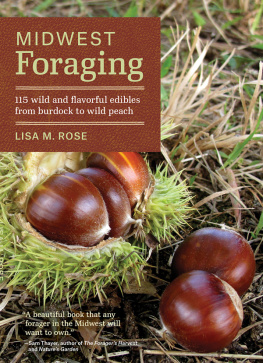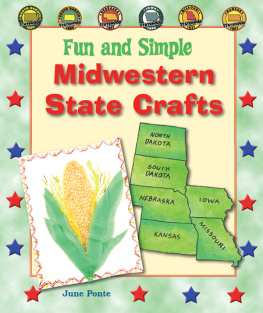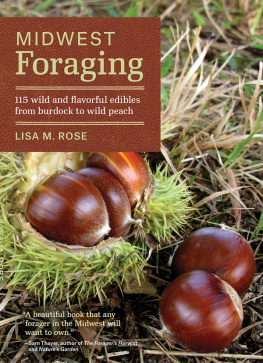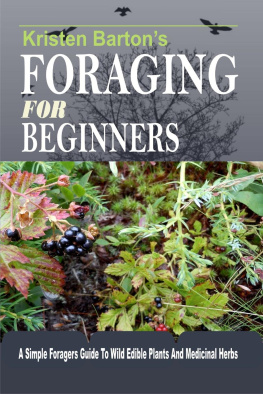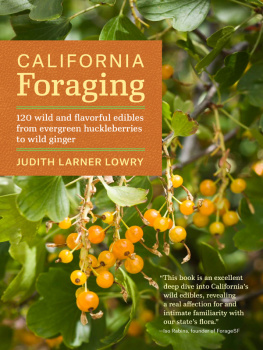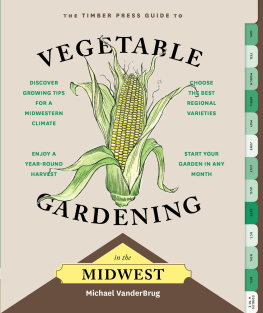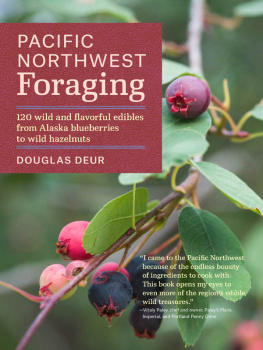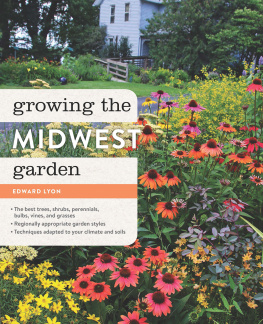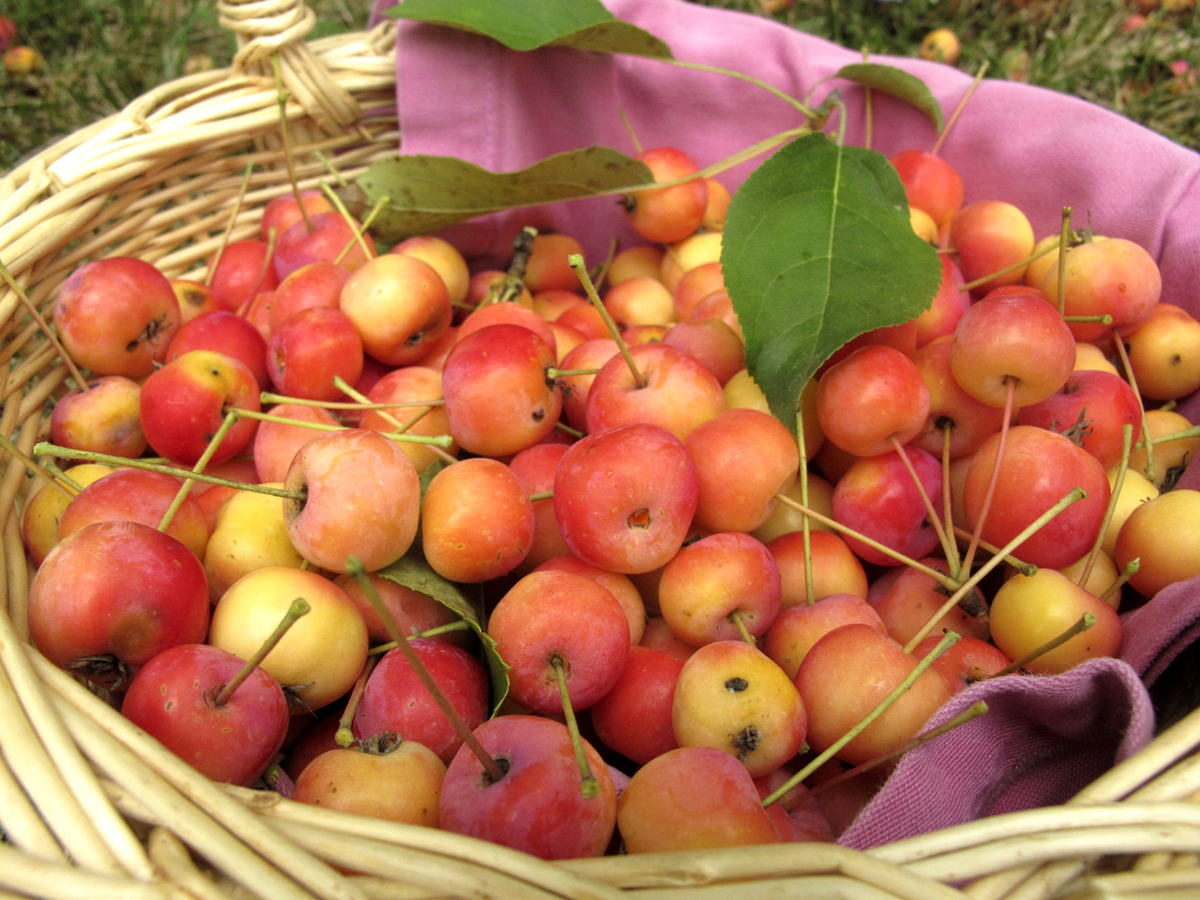
MIDWEST Foraging
115 wild and flavorful edibles from burdock to wild peach
LISA M. ROSE
TIMBER PRESS
Portland, Oregon
Frontispiece: Crabapples grow in abundance on trees across the Midwest.
They are perfect for pies, cider-making, and snacking.
Copyright 2015 by Lisa M. Rose. All rights reserved.
Published in 2015 by Timber Press, Inc.
Photography credits appear on .
The information in this book is true and complete to the best of our knowledge. All recommendations are made without guarantee on the part of the author or Timber Press. The author and publisher disclaim any liability in connection with the use of this information. In particular, eating wild plants is inherently risky. Plants can be easily mistaken and individuals vary in their physiological reactions to plants that are touched or consumed.
The Haseltine Building
133 S.W. Second Avenue, Suite 450
Portland, Oregon 97204-3527
timberpress.com
Text and cover design by Benjamin Shaykin
Library of Congress Cataloging-in-Publication Data
Rose, Lisa M., author.
Midwest foraging: 115 wild and flavorful edibles from burdock to wild peach/Lisa M. Rose.First edition.
pages cm
Includes bibliographical references and index.
ISBN 978-1-60469-702-5
1. Wild plants, EdibleMiddle WestIdentification. I. Title.
QK98.5.U6R67 2015
581.6320977dc23 2014042915
To my Dad, for teaching me to listen to the earth.
Contents
Preface
Cultivating a Sense of Place
Reminder: Whenever Lisa calls to hang out, bring hiking boots, a change of clothes, and an appetite for eating things off the forest floor.
Nicolas Mika, a friend
As a child, I lived only minutes from Lake Michigan. The open fields, woods, sandy dunes, and Big Lake were my playground.
I remember growing up in my mothers garden: Tall stalks of corn, overgrown zucchini bushes, large heads of cabbagesall part of the bounty grown for our dinner table. My mother canned and made preserves from our seasonal garden, but we also had wild foods as part of our harvests. The wild grapes lining the backyard fence were turned into jellies and canned juice. Morel mushrooms in the spring were added to eggs and pasta. Apples were picked off the wild apple trees near our elementary school. Wild foods were a part of my childhood.
I also remember the evening I made my first summer fruit pie. It was a hot and sweaty June summer evening in my college apartment in Grand Haven, Michigan. I made a delicious (but somewhat runny) mulberry pie, with berries I gathered alone on a sandy trail beachside. While the pie may not have been perfect, that memory of picking the berries on the trail and baking the mulberry pie in my hot kitchen remains vivid in my mind.
My culinary abilities grew, and I found myself looking to the trees, hedges, and weeds for my teas and meals at my table. Dandelions, violets, nettles, burdock, and even garlic mustard became commonplace in my recipes, and today wild foods are part of my everyday kitchen life.
As a forager, I have learned to sense and anticipate the subtle changes in the seasons, almost like a sixth sense. On sunny February days that are cold but bright, I can actually hear the sap in the maple trees begin to run. April rainstorms and warmer weather means its time to go mushroom hunting. On muggy days in June with frequent pop-up thundershowers, I always check on the roses and elderflowersone round of summer thunderstorms could decimate the delicate blooms that I so love to dry for tea. And nuts falling in the green gulch next to my kitchen window? I try to harvest those walnuts before the squirrels do. I feel empowered with this ability to read the wild world around me. I will always have the ability to find food and these skills connect me to the natural world in a deep way.
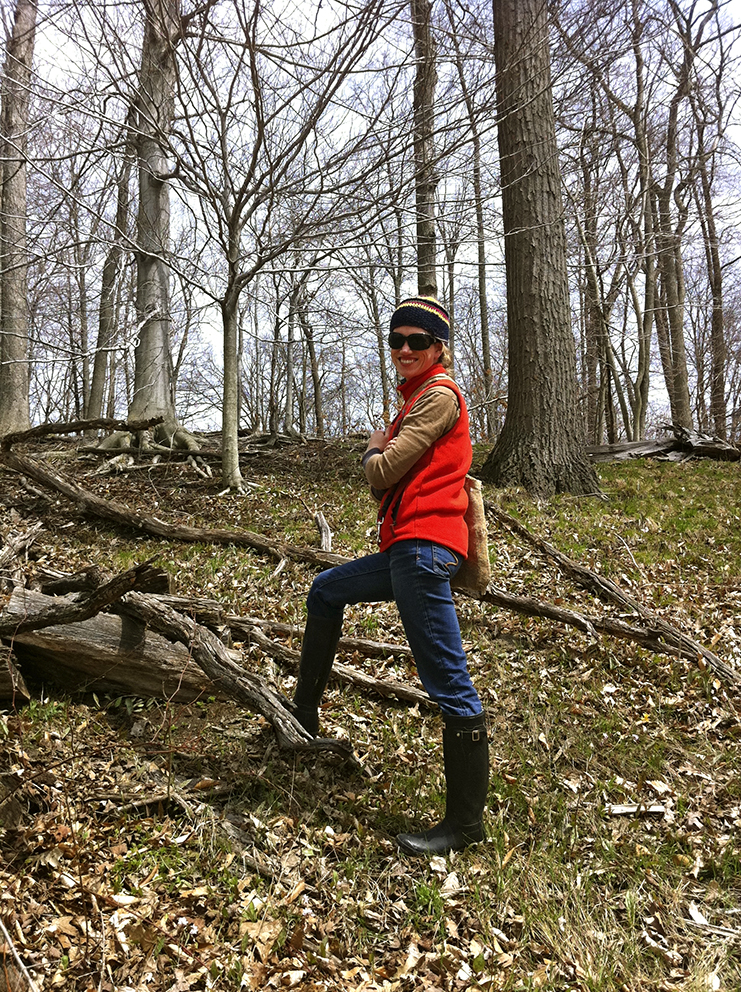
On an early spring foraging jaunt in the dunes and woodlands near my home in western Michigan.
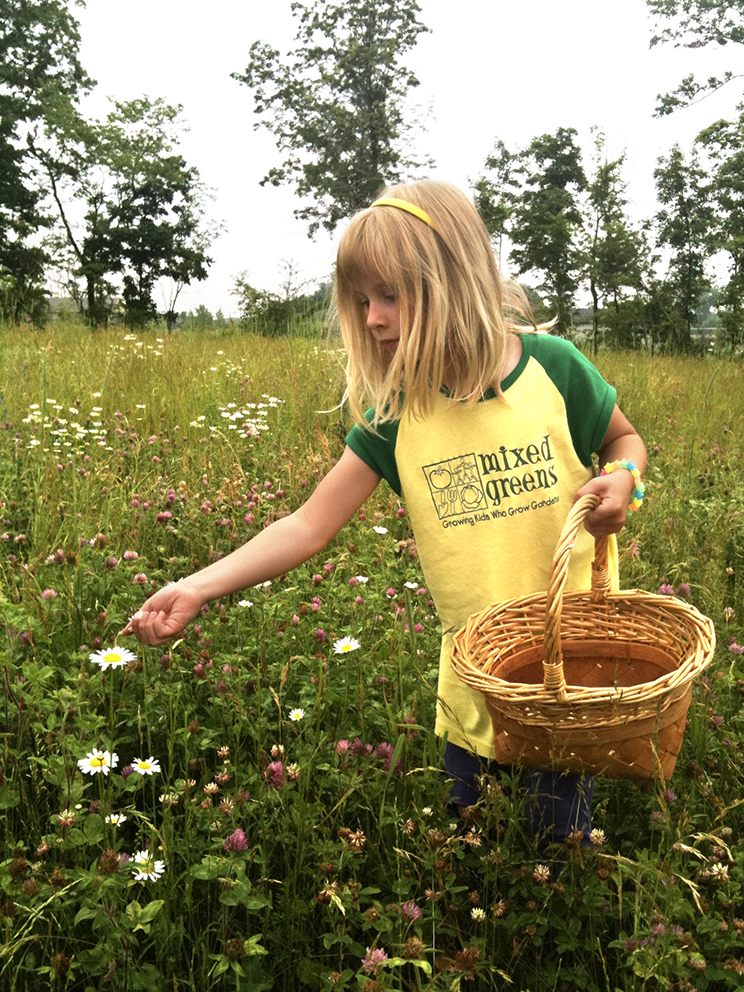
My children have grown up learning about using wild plants for food and herbal medicines. Teaching children how to forage not only offers them valuable skills, but it instills in them a sense of wonder about the natural world. Here, my daughter, Emma, gathers ox-eye daisy for tea.
So many of us are seeking a connection to the land and to each other. Foraging, local foods, and community gardening connect us in a deeper way to the world around us. That need for escape into the wild is very real: we desire space and clarity. I believe this is one reason foraging is gaining in popularity.
We are also making the connection between healthy soil, healthy foods, and healthy people. The food on our plate hasor should haveroots in the earth. Our industrialized food system is a root-less, industrial production model, leaving us with over-processed, nutrient-less choices at the grocery store. People are starting to invest in healthful, local, and organic whole foods for health insurance.
Wild foods are more nutrient dense. They are a source for unprocessed minerals, an alternative to commercial supplements. Wild and foraged foods could be a solution to our food sensitivities. More and more research on bioregional, traditional diets suggests gut-healing powers rest with eating wild foods that grow in our own bioregion.
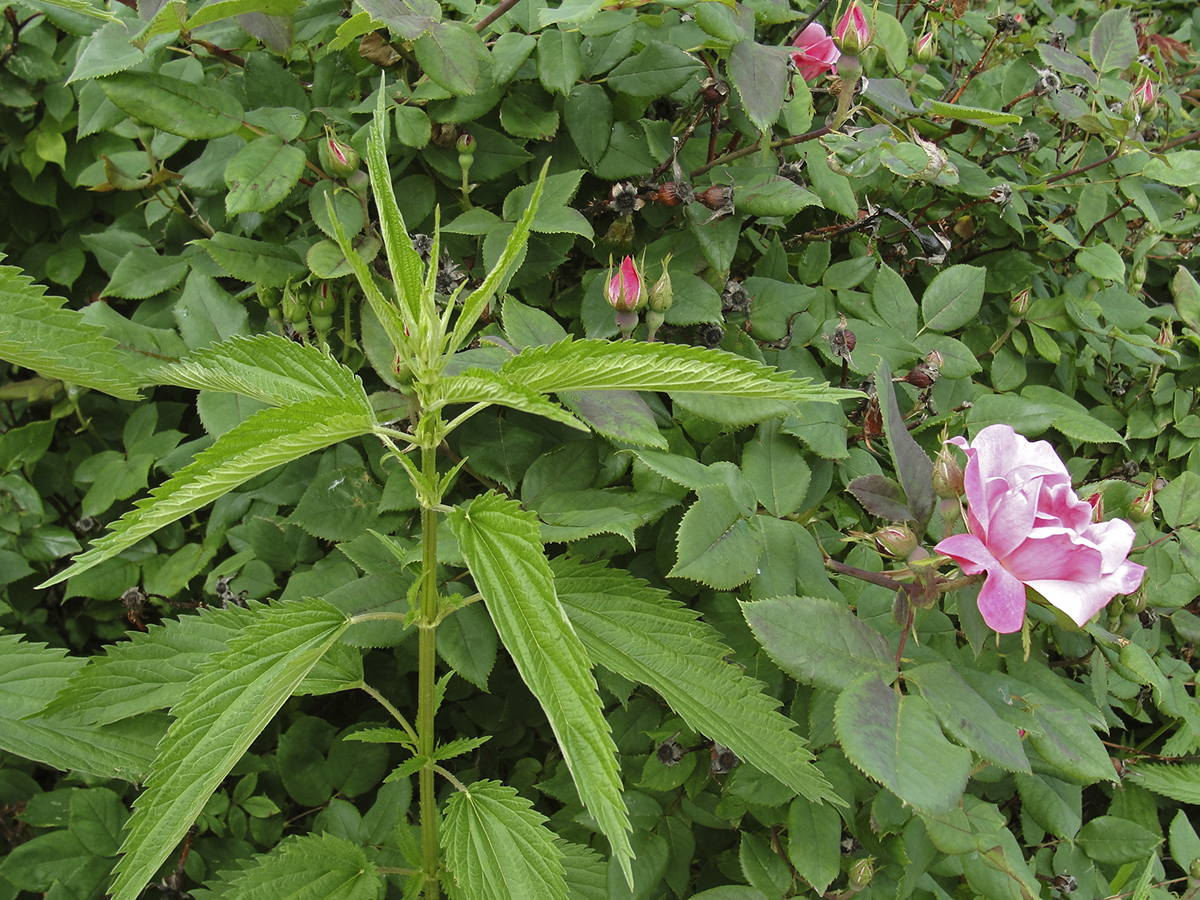
Even in the city, wild foods are everywhere. Here, nettles grow in a cultivated flowerbed of roses in downtown Detroit.
Once you find those sweet harvesting spots to pick fresh nettles in the cool, spring air, you most certainly wont want to return to the eating pallid lettuce and spinach leaves sitting ensconced in plastic on the grocery store shelves. You will find yourself craving the bitter flavors of the wild chicory and will cherish finding the smaller but more flavor-packed wild strawberries you discover in the open fields of early summer.
Returning to wild ways is a refreshing shift in our communitys way of life, and it delights me that this movement continues to gain momentum. For health, economy, environment, and justice, its now quite popular for folks to trade in their Kentucky bluegrass lawn for gardens and edible landscaping, including wild weeds like burdock, dandelions, violets, and sorrel. Even if you are a city-dweller, wild foods are everywhere: dandelions in the park, basswood flowers on the trees lining the streets, nettles growing in the rose garden beds.
Paying attention to wild plants helps connect you to the land itself. Eating foods from the wild will bind you to a place: its rivers, animals, smells, sights, and sounds. Ingesting bits of the land make the place literally a part of you. You can gather the wild and bring it into your kitchen to prepare meals for friends and family, nourishing our bodies with nutrient-dense foods and our minds as we take time to connect with each other.
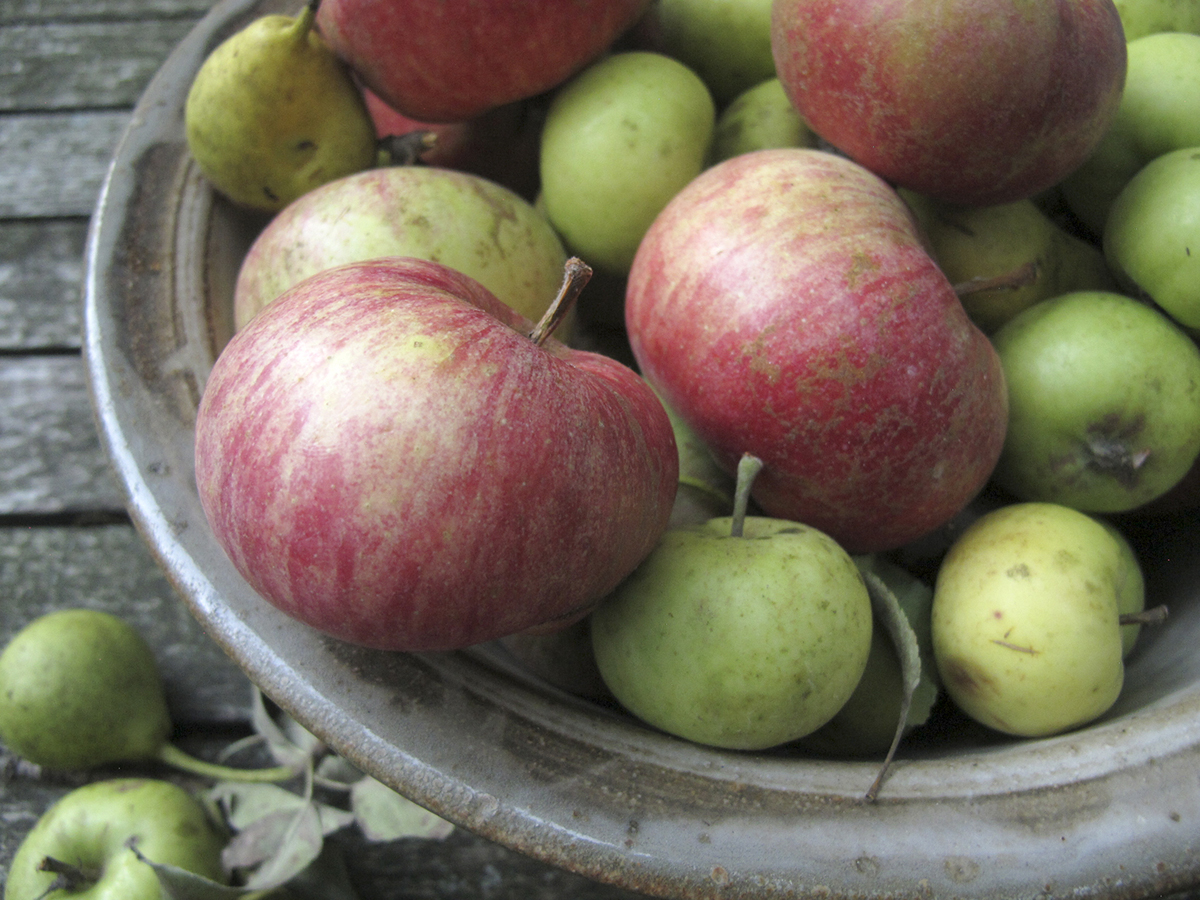
A delicious harvest of wild apples ready to be made into pie and applesauce.
Next page
